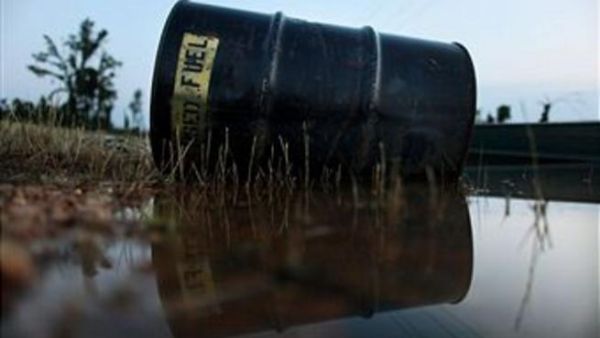The Organisation of the Petroleum Exporting Countries (OPEC) pushed its combined oil output up to its highest level since 2008 in February this year as demand continued to rise and fears rose over the threat of military action against key producer Iran. According to analysts at Dow Jones Saudi Arabia, the cartel’s biggest producer churned out an average of 9.8 million barrels per day (b/d) during the month.
Oil futures in Europe traded at $120-plus last month, and Riyadh can expect a hefty windfall in the coming year, especially if geopolitical tensions in the region and abroad continue to keep oil prices up, neighbouring Iraq continues to underperform as a producer, and the world’s economic powerhouse, China, continues to buy more and more oil, says a London-based energy analyst.
Yet while 2012 is shaping up to be another good year for the Saudi balance sheet, concerns are growing in Riyadh that certain aspects of government policy are unsustainable in the long-run, especially if oil prices fall – as they may well do.“Generally,” says the analyst, “oil prices as high as we have seen in 2011 and 2012 have triggered recessions. In fact, the only time we have seen these kinds of numbers was just before the 2008 crisis, so there is real potential there for a collapse in prices. “Traders are focused on the upside to prices – geopolitical risk, in Iran and again now in Libya; Chinese demand, the US economy growing if unevenly – rather than the downside: the Eurozone and the effect high oil prices often have on the global economy. Take away the upside risks, and we could see another collapse in prices.”
Riyadh’s domestic response to the Arab uprisings of 2011 was to dramatically boost its spending on bonuses, wages, and housing projects. Overall, the Gulf’s largest economy spent more than SR800 billion ($215 billion) over the year, 40 percent more than it had budgeted. On paper, spending was trimmed for 2012. Riyadh has planned for SR690 billion of spending this year – still more than the original budget for 2011 – while cash has been carried over from 2011 for future projects.
The government deposited a staggering SR250 billion, or $66.7 billion, of its 2011 surplus with the Saudi Arabian Monetary Agency (SAMA) as funding for 500,000 new affordable housing units. One regional economist estimates that the “real” budget for the coming year will be about SR750 billion. Kristian Coates-Ulrichsen, a research fellow at the London School of Economics who specialises in Gulf governance, says many of the unplanned spending increases of 2011 cannot be easily reversed, as they were for “current” spending – on wages and overheads rather than projects that can be halted – “and that is simply unsustainable in the long run”.
If oil prices were to fall and stay low, says Said Hirsh, chief economist at London-headquartered Capital Economics, the impact on spending could be severe; the current “break-even” oil price at which Riyadh can balance the books is $85 per barrel, a price not seen on international markets before 2008.“Saudi Arabia’s government spending is sustainable as long as oil prices do not fall below, say $60 for a prolonged period,” he says. “However, from previous experience, when oil prices stay low for a long period, such as in the early 1980s, austerity can set in pretty quickly in Saudi. Unlike the smaller, rich Gulf states, Saudi has to sustain a much larger population and also a very ambitious investment programme.”
The kingdom is not just spending big at home. During the Arab Spring, the government also stepped in with cash to help out its neighbours. In March 2011, the Gulf Co-operation Council (GCC) promised a total of $20 billion to Bahrain and Oman spread over 10 years to build new infrastructure and houses. Riyadh was expected to underwrite much of that cost, while it also gave generously to the new Egyptian government and to Yemen, which lies at its southern border. Sanaa received about one million barrels of oil from its neighbour in 2011 and will receive another $1 billion-worth of oil products this year.
Yemen’s new government has already approached Riyadh for more money to help plug a projected $2 billion budget deficit for the coming year. Meanwhile, a new “union” with Bahrain is likely to cost Riyadh more than it does Manama.While the government should be able to prune spending in the future, it would have a tougher time reining in domestic energy consumption, which is putting an increasingly large dent in the amount of oil the country can export and the money it makes from producing and refining its key natural resource. According to the UK’s BP, the kingdom consumed 2.8 million b/d of oil, almost 30 percent of total output in 2010, while it used all of the 8.1 billion cubic feet per day of gas produced domestically.
The oil products and electricity produced using that oil and gas was sold at a 70 to 80 percent discount to European and US energy prices.Worryingly, UK thinktank Chatham House forecasts that energy consumption should grow at four to five percent per year for the foreseeable future. State oil giant Saudi Aramco does not currently plan to increase its maximum output capacity to more than 12 million b/d. An executive at a major oil engineering company adds that most of the new oil and gas which Aramco plans to bring on stream in the near future – to replace lost capacity at its ageing fields and to meet rising gas demand – will be much harder to produce and process.
The oil will be heavy, sulphurous and hard to refine, while the non-associated gas will cost a lot to get out – driving costs up. “Aramco can’t be happy that it will be spending a fortune on new production and the $10 billion refineries it needs to process that oil, only for it to be sold at a discount locally,” he says. “That doesn’t really make sense,” he says.Glada Lahn and Paul Stevens at Chatham House project that if consumption were to continue rising at its current pace and crude production plateaued at 12.5 million b/d, exports would fall within the decade.
At an average oil price of $77 per barrel the pair reckoned that Riyadh could face sustained budget deficits from 2022 onwards. Even at $120 per barrel, Lahn tells The Gulf, the inevitable would only be delayed until 2028“Given the dependence on oil revenues in Saudi Arabia [which cover some 80 percent of public spending], the government has some choices to make,” she says. “It can leave things as they are and bet on an increasing global oil price or it can restructure the economy. The latter will increase resilience but it takes time.” She points out that current economic diversification strategy is based around petrochemicals, plastics and fertilisers – low employment-generating industries which depend on oil and gas for feedstock and are subject to similar levels of price and demand volatility.
Even where jobs are created in these industries, Hirsh adds, they don’t generally go to locals, meaning their benefit to the local economy is questionable.“The Saudi economy already creates many jobs,” he says. “The problem is that these are taken up predominantly by expatriates since the local population is either not skilled enough or not willing to work (due to conditions or salaries). Saudi businesses also prefer foreign workers who are more productive.”Sadad al Husseini, former head of exploration at Aramco, now a private consultant, agrees that current patterns of consumption and spending can’t go on forever, but adds that they probably won’t. “The surge in demand isn’t sustainable,” he says, “but I don’t think that it is a long-term trend.”Saudis are becoming more conscious of the need to become more efficient consumers, he says, pointing to plans being drawn up by the government to slash energy use. Part of this will probably involve cutting subsidies. “I think that, inevitably, gasoline prices will have to go up,” Al Husseini adds.“Consuming less energy at home will buy more time to transition,” Lahn points out. “It would also bring social benefits including more stable power supplies and cleaner air.”Meanwhile, spending can be maintained because oil prices aren’t going south anytime soon, Husseini says: “All of this avoids the question of global demand. If the [global economic] recovery is sustained and demand remains strong, then Saudi Arabia is not going to be able to meet all the new demand. Brent is at $100 per barrel, which now looks like a reasonable price, which is only really likely to climb and climb.”But attitude is missing the point, argues Coates-Ulrichsen.
The more Riyadh throws at wages and services, the harder its job will be in future. “It is easier to give people something than take it away,” he says. “After the Arab Spring, their scope for fiscal reform is much lower and society is just going to ask for more and more and more.”Saudi Arabia may have escaped relatively unscathed from Arab Spring turmoil, but policymakers will be praying that the high oil prices the uprisings brought are here to stay.








